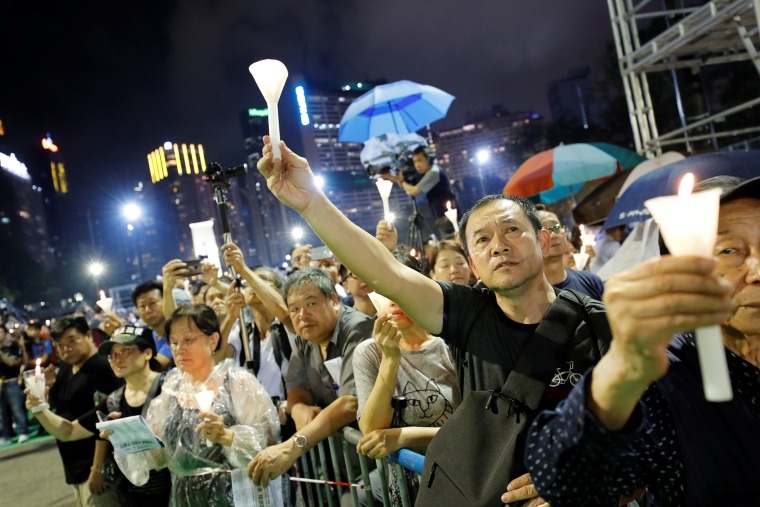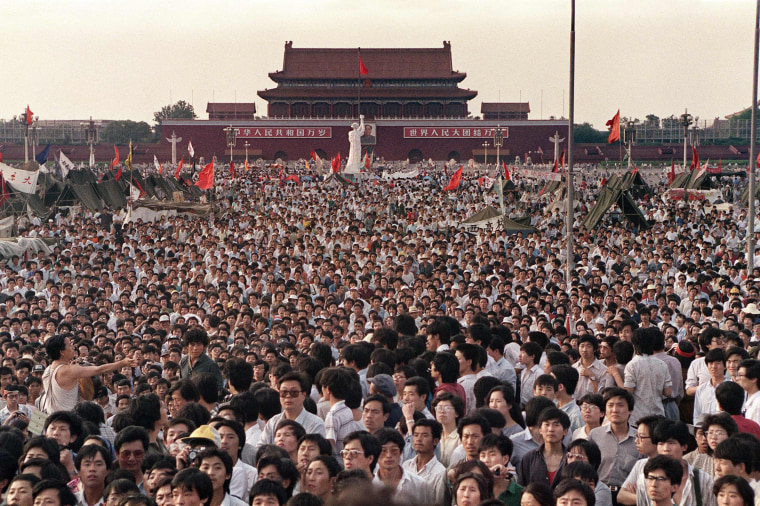BEIJING — There are no memorials or commemorative events. In fact, there is no mention at all here of "the incident" that left hundreds, possibly thousands dead and changed the direction of modern Chinese history.
As the rest of the world marks the 30th anniversary of the Tiananmen Square protests and massacre, China is instead passing the day as it typically does: by censoring discussion, restricting coverage, and pointing to the country’s economy as proof of how far it has come.
It’s true, there are millions who enjoy a level of prosperity not seen a generation ago. A confident China is making advances in artificial intelligence, telecommunications networks and space exploration, and is building its own jetliners.
Yet politically, China has arguably never been more suffocating.
There is a massive security apparatus leveraging those technological advances to track where people go, who they know and how they behave. Of all the video surveillance cameras on the planet, nearly half of them are in China.
Activists and religious groups are expected to abide by state restrictions and defiance is routinely punished. Hundreds of thousands of Muslims are held in "vocational training centers" without being charged, in what the U.S. has described as mass internment camps.
There are restrictions on freedom of speech and internet access that control what 1.4 billion people read, write, publish and post to social media. And every year, in the lead-up to June 4, the authorities go into overdrive. Beijing-based activists begin to disappear for what is commonly known as "annual forced vacations," where authorities escort them to other cities until the anniversary passes.
On Weibo, China's Twitter-like blogging site, a search using keywords such as "Tiananmen," "incident," or any variation of "June 4, 1989," returns no results. Last week, the popular video website bilibili.com announced its comment function would be disabled until June 6, citing a "technology upgrade." One of the most active groups on the video-share site douban.com is also down for the month due to "maintenance."
Officially, the government says nothing about the moment its leaders at the time ordered the army to fire on its own people. At a forum in Singapore last weekend, China’s defense minister said, "How can we say that China didn’t handle that Tiananmen incident appropriately?" adding that it was necessary to "stop turbulence."

Beijing has spent years suppressing history and then revising it, though the spring of 1989 was fundamental to how modern China is wired. English-language editorials chastised foreign politicians and activists for using the anniversary of the "riots" to attack China, but did not mention the bloody crackdown itself.
Thirty years on, Tiananmen Square looked as it does most days. To get there, I rode my bike along Chang’An Avenue, passing the Beijing Hotel from where the iconic "Tank Man" photo was taken (an image that is now ironically Chinese-owned after Bill Gates sold a photography archive that included it and other sensitive Tiananmen Square material to the China Visual Group in 2016).
Traffic is always tightly controlled along the avenue that passes between Tiananmen Square and the Forbidden City. To get into the square, people line up and must pass through an airport screening-type security check. There did not appear to be any added security on Wednesday, though foreign journalists are not allowed to film or report without permission (and applying for it is, well, complicated).
The square itself is unchanged, flanked by the Great Hall of the People to the west and the National Museum of China to the east. At the far end is the mausoleum of Mao Zedong. Even the lampposts, seen in images of the protests and crackdown, are the same though most are now mounted with surveillance cameras.

In 1989, the square was filled with nearly a million protesters demanding democracy and equality. New images have emerged in recent days and they are striking. On the day of my visit, Tiananmen Square looked empty except for small groups of tourists milling around taking pictures and selfies, and a vendor hawking souvenir postcards. Some journalists were reportedly stopped by police, and some had documents checked or images deleted.
The only soldiers arrived before sunset, and marched to the northern edge of the square near the Forbidden City for the procedural lowering of the flag. It started to rain, and people retreated. For the most part, the anniversary of the massacre was marked exactly as China’s government wanted: with silence.
Dawn Liu contributed reporting from Beijing.
